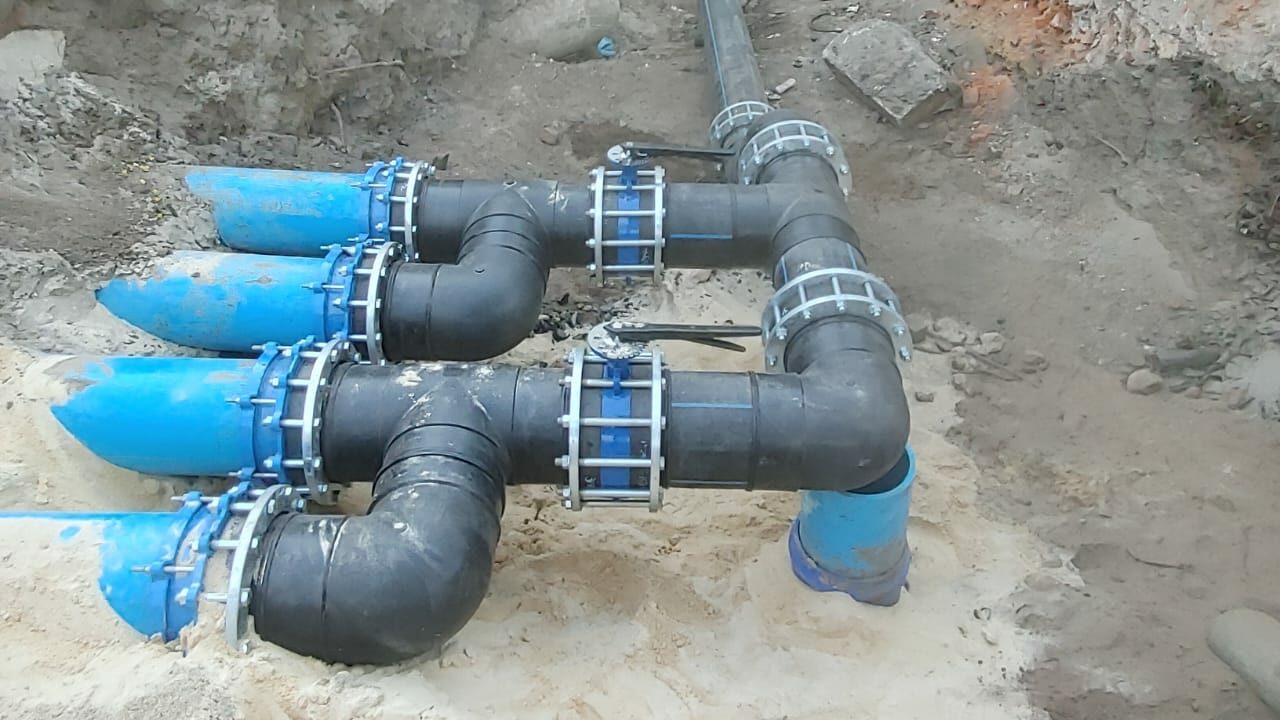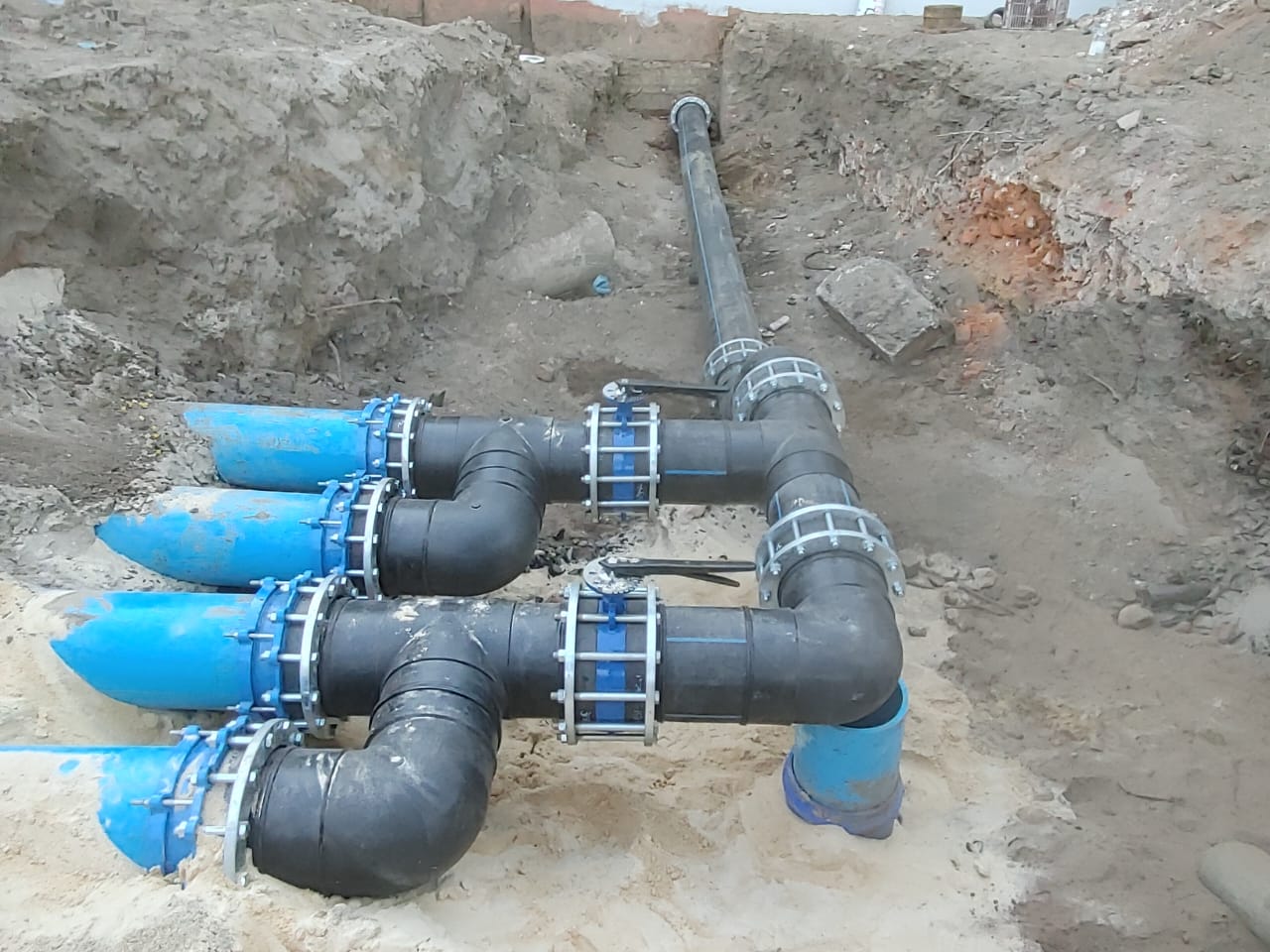
When it comes to choosing the right type of pipe for your project, you’ll have many options to consider. Two common types of piping materials are PVC (polyvinyl chloride) and HDPE (high-density polyethylene) pipes. We are going to take a look at the differences between PVC pipes and HDPE pipes to help you make an informed decision.
When it comes to distributing water, the most popular choice for many years has been PVC. Galvanised steel pipes and asbestos cement were replaced by this material in 1960 because it is more durable and cost effective than their counterparts, although it took many years to phase out galvanised and asbestos cement pipes as the material of choice.
In recent years HDPE has been gaining ground, mostly with industrial and infrastructure projects. HDPE however is not new and has been used on mines for many years and for good reason.
Characteristics of PVC and HDPE
Although there are very different attributes to each material they do share some common characteristics. PVC(Polyvinyl Chloride) and HDPE(High Density Polyethylene) are plastics and have the following common characteristics:
- Light weight(compared to their steel or asbestos cement counterparts)
- Corrosion resistant
- Resistant to bacterial build up
- Resistant to chemical build up
- Much longer life expectancy than steel, iron or copper
It has to be mentioned that expectations should be managed, if, for instance, there is iron in the water source or the water source is of poor quality then it will still form deposits on the inside of the pipe and close up eventually. In many cases treatment of the water source with a Water Treatment Plant or product can greatly reduce if not eliminate scaling problems.
Scaled up pipes can severely impact production and efficiency of the system while eating into OpEx or CapEx budgets, there is a very economical and eco-friendly way to address scaling and organic build up in pipes which we will discuss in a different article.
PVC Pipes
PVC pipes are made from a plastic polymer known as vinyl chloride. They are popular for their affordability, versatility, and ease of installation. PVC pipes are used in a variety of applications, including plumbing, irrigation, and drainage. They are also commonly used for electrical conduit and in the construction of structures like greenhouses and swimming pools.
One of the biggest advantages of PVC pipes is their low cost. They are one of the most affordable types of pipes on the market. PVC pipes are also easy to install and maintain, and they have a good lifespan. They are resistant to corrosion, chemicals, and UV light, which makes them a popular choice.
However, PVC pipes also have some disadvantages. They are not as strong as other types of pipes, which means they may be more prone to cracking or breaking under stress. They also have a lower temperature tolerance than some other types of pipes, which makes them unsuitable for use in high-temperature or extreme cold applications.
With PVC being so stiff it tends to also not do well with movement for instance when ground is settling. It is also less resistant to damage when buried, from rocks or improper bed preparation. Typically to lay PVC underground additional work and costs will need to be incurred for the correct bedding. Glue used for joints have a tendency to get brittle over time and stress being put on such joints will cause it to start leaking as it cracks and in the worst case can delaminate.
PVC has high rates of background leakage on connections, which means there will be water lost at joints and connections in the reticulation system.
HDPE Pipes
HDPE pipes are made from a plastic polymer known as high-density polyethylene. They are known for their strength, durability, and resistance to corrosion. HDPE pipes are used in a variety of applications, including water supply, gas distribution, and sewage systems. They are also commonly used in mining, agriculture and in processing plants.
One of the biggest advantages of HDPE pipes is their strength. They are much stronger than PVC pipes, which makes them a popular choice for high-stress applications. HDPE pipes are also highly resistant to corrosion and chemicals, which makes them suitable for use in harsh environments. Because of the strength and durability of HDPE in general no special bedding needs to be prepared and can be buried as is. Since HDPE is welded together the issue of background leaking is virtually eliminated and with a much thicker wall thickness than PVC cracking or damage is much less likely to happen.
However, HDPE pipes also have some disadvantages. They are more expensive than PVC pipes, which may make them less attractive for some projects. This is more true for small projects, but on larger projects HDPE is a very viable cost effective option.
Conclusion
When it comes to choosing between PVC pipes and HDPE pipes, it’s important to consider the specific needs of your project. PVC pipes are an affordable and versatile option that are suitable for a wide range of applications. HDPE pipes are stronger and more durable, but can be more costly on smaller projects. That being said, the durability and lifespan of HDPE out ways PVC, and will benefit CapEx and OpEx budgets over the longer term. By understanding the advantages and disadvantages of each type of pipe, you can make an informed decision and choose the right option for your project.
Feel free to contact Proelium (Pty) Ltd to discuss the options or for more information.
Tel: +27 87 133 3824
Email: info@proelium.co.za
Web: proelium.co.za

